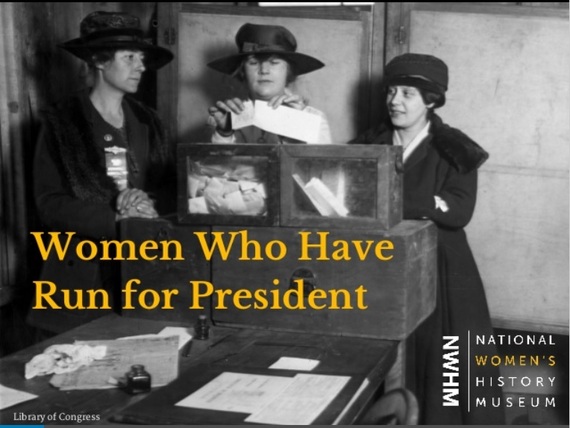This summer promises to deliver an historic period. We are likely to see the first woman named the nominee for a major U.S. political party. While more than 30 women have run for president of the United States - check out National Women's History Museum mini-exhibit on former female presidential candidates - for the first time in the nation's history a female will be the nominee of a major political party. That's making history.
This history has a long arc - starting with Victoria Woodhull, stretching to Shirley Chisholm, and arcing with this summer's official announcement of Hillary Clinton as the nominee for the Democratic Party. As a history buff, I have a sense of pride and appreciation watching several media outlets cover the history of women in politics - a history that is longer than most people think.
Yet, in the midst of the excitement, I am reminded that the collective state of women is still not where it could be.
While women are half of the population, they make up only 19 percent of our federal leadership in Congress (as compared to Rwanda where women make up 60 percent of their legislature). Still, women make up only 19.9 percent of board positions on Fortune 500 companies and are less than 10 percent of top-earner positions.
The first ever summit dedicated to a discussion on The United State of Women highlighted that there is work still to be done to bring parity between men and women. Key to achieving this is expanding awareness of women who have excelled in the board room, as CEOs, as legislators and in so many other fields. Study after study has shown that when young girls can see other women in unlikely and non-traditional positions, they learn to aspire to those roles as well.
Efforts to improve the status of women and girls cannot ignore the power of role models and the influence of knowing American stories that include women. We need to tell young girls and boys that their forefathers AND foremothers played key roles in building the country. That's how we inspire the next generation and it's how we build a greater country.
